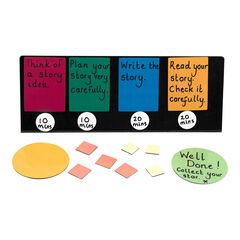He had a different way of seeing the world that meant that he could see answers to questions and solutions to problems that I couldn’t. He clarified everyday events to the point of no doubt and gave the most logical responses to things that were unarguable. Our class was richer for his presence even if it did cause us problems on the M42 as we returned from a school trip. In my infinite wisdom, I’d told Jake that we could all get off the coach soon to stretch our legs. Jake really didn’t want his legs stretching – it might hurt!
Over time I have taught many more autistic pupils; each one with their own autism, their own needs and their own unique way of being. I’ve had to learn their version of autism to find the best ways for them to access what was on offer in my classroom in order to have the brightest possible tomorrow. This has meant everything from tapping into special interests to re-evaluating every wall display to provide just the right level of sensory input. There isn’t a set menu for what we should have in place for our autistic pupils. I firmly believe that more of a ‘buffet approach’ is required that we can personalise for each individual.
What follows are seven starting points which I hope you will find helpful:
- Don’t discourage special interests which can be used as a highly effective motivator. Build time into the school day for the pupil to explore their special interests in a safe and healthy way as a reward or to provide respite.
- Avoid stereotypes. I have usually found that autistic children want to be sociable and have friends – they don’t always know how to achieve this, but can with support. Similarly, autistic children can be imaginative and respond well to spontaneity and not all of them are obsessed with Thomas the Tank Engine.
- Think carefully about sensory needs. Some autistic pupils are working really hard to maintain an appropriate arousal state for learning. Their pursuit to achieve this can result in some more unique sensory based behaviours. Explore the provision of a sensory diet and access to a low arousal space to punctuate learning opportunities.
- Take time to learn the strengths of each individual’s autism and use these to become learning advantages. For example, do they learn more effectively by rote? Do they prefer a non-fiction approach to reading?
- Provide an autism-specific curriculum that encompasses real life application of social language and communication skills. These are often taught in isolation as part of an intervention. Support is required to transfer these skills to everyday life consistently and independently.
- Provide a high level of visual support. Use timelines, photographs and concrete objects. Provide clarity about what will happen, when and with whom. This lessens anxiety.
- Explore peer awareness. The more classmates understand, the more they can and will help.
Above all else remember that autism is one word which describes at least a million different stories.
This article has been written by Beccie Hawes

Beccie has worked in all aspects of Special Educational Needs including mainstream, additionally resourced provision and specialist settings. She has extensive experience as a SENCo, Inclusion Manager, Lead Local Authority SEND Advisory Teacher and has set up and led an inclusion advisory service.
Beccie is currently proud to be the Head of Service with Cadmus Inclusive, part of Cadmus Services, which is based in Walsall. This service has a national reach and actively supports schools with all aspects of providing a high quality education for vulnerable learners. Beccie is the author of ‘The Complete Dyslexia Toolkit’ and co-author of ‘Getting it Right for SEND’ and ‘How to Create the Perfect Partnership with Parents’. Beccie also writes the national Ebriefing: SEND Bitesize. She has developed a number of educational resources to support learners which schools across the UK have purchased and use. Beccie remains very ‘hands on’ in the classroom and is passionate about being at the chalk face to support teachers and children to think differently for a brighter tomorrow. She is also the mum to four boys and a dog.




